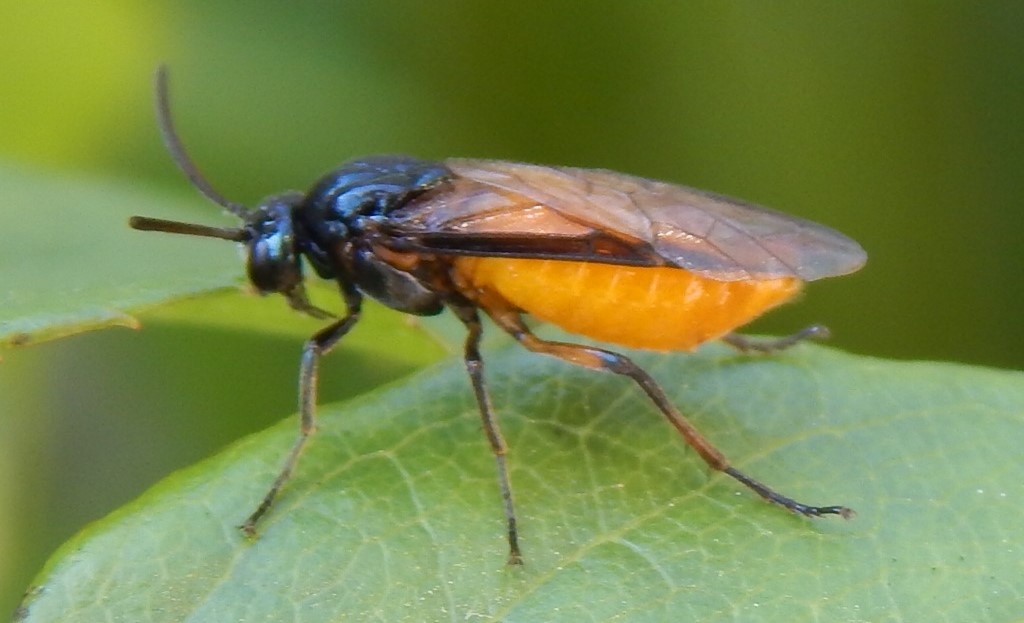
[036] Arge Pagana, Large Rose Sawfly
Introduction
Arge pagana is a common insect in the Sawfly group, sometimes know as the Large Rose Sawfly.
Wikipedia notes that the very similar Arge ochropus is also called a Rose Sawfly.
Taxonomy
Kingdom Animals
Phylum – Arthropods
Class – Insects
Order – Hymenoptera (Ants, Bees and Wasps – and Sawflies)
Suborder – Symphyta (Sawflies and others)
Family – Argidae
Genus – Arge
Scientific Name – Arge pagana
Name
‘Symphyta’ is derived from the Greek for ‘grown together’ for the lack of a ‘waist.’
Several nymphs and maidens in Greek mythology were called Arge. I am not sure that any of them would feel complimented by having their name used for a squidgy, fat little insect. ‘Pagana’ just means rural.
It must be difficult finding original Latin names for 57 very similar species of Arge. Some are named for the species of their food. Arge pagana has the obsolete synonym Arge rosae, which seems more appropriate.
(Synonyms usually arise when two people independently identify and name a new species.)
Sawflies
I won’t go into all the details but the order Hymenoptera is traditionally divided into two suborders.
- Apocrita, with a narrow petiole (‘waist’) in their abdomens, which includes ants, bees and wasps (and some others). There are about 150 000 species.
- Symphyta, mostly Sawflies, with 7 000 species.
The Sawflies are named from the saw-like shape of the ovipositor but you will never see this. The lack of the petiole makes them very different in shape to bees and wasps.
Sawflies, typically about a centimetre in length, are usually plant-eaters. They are holometabolous and the adults only live for about a week. The female uses her ovipositor to drill into the plant to lay her eggs and the larvae feed on the plant.
When you see large numbers of ‘caterpillars’ on a plant they are usually sawfly larvae. They can cause extensive damage to crops and other plants and are major pests in forestry.
Description
Arge pagana has a large, fat abdomen coloured bright yellow-orange, which is visible through the translucent wings. Most of the rest of the body is black.

Habitat
This species is widely distributed and feeds on several Rosa species. Here is a female laying her eggs.


A few days later, here is the scar on the rose stem with the eggs.

Other Notes
It won’t surprise you that the place to look for these is on roses. Pictures are from a rose in my tiny garden
See also
Coming soon another sawfly, [046] Athalia rosae. You may think from the name that it’s another rose sawfly but it isn’t. Taxonomists don’t always get things right. (You probably knew that already.)
